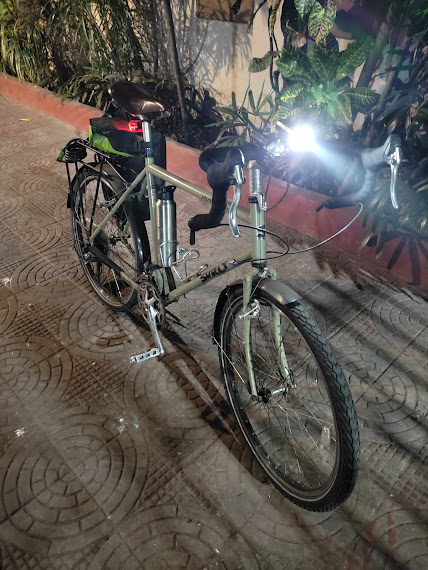My Garmin Edge 130 is paired to a cadence and a speed sensor. While the cadence sensor is mounted on the
crank arm of the Merida, the speed sensor is installed on the training wheel. This morning I wanted to check my cadence and realised the sensor was not working. I was a little worried that it might have either conked off or the battery was down.After coming home I promptly replaced the battery (I have a whole box full of these 2032 batteries) and to my great relief it was found to be working just fine. As is my wont, I had to once again learn the entire process almost from scratch. First you take the damn sensor off the crank arm. It is secured with a robust rubber band. Next you find out how the battery chamber is opened. That was pretty intuitive. But what stopped me for a long time is the question - how do you take the actual battery out of the slot? Turned out one has to press any of the sides of the battery down, the other side comes up. Otherwise there is no notch where you can slip your nail and jack it up. This is the ultimate in precision engineering. Not a micro millimetre is wasted.
The biggest challenge was taking the new Duracell battery out of its packing. I had to cut it open using a pair of sharp scissors !!!!
But the great relief was when I saw the two tiny light dots signalling it was fine. I checked it out by turning on the Edge 130 and they connected almost instantly.
I wrote down the entire process here lest I forget again. I am not sure how the health of the speed sensor's battery is. I suppose it should also be changed. But then taking off the hub of the wheel is such a tricky thing to do.
I have decided to do cadence based fartleks at least once a week. That is you go for 30 seconds on high cadence and then cool off for another 30 seconds. Gradually you increase this 30 seconds to perhaps a minute. This exercise really helps. I learnt it while training on Zwift before the Darjeeling ride of 2019.
Meanwhile, today is 3rd November and the cadence sensor is working fine. Here is today's reading.








